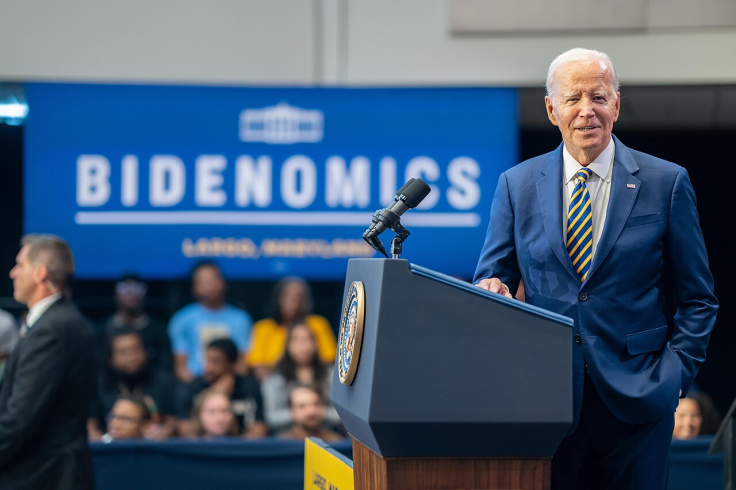The Pell Grant program, a crucial source of financial aid for low-income students in the United States, is expected to run a significant surplus of $11.4 billion for the fiscal year, according to the Congressional Budget Office (CBO).
This development alleviates concerns about potential funding cuts that could have adversely affected millions of students. The surplus marks a moment of relief for policymakers and educators alike, but it also brings into focus several important considerations for the future of the program and the broader landscape of federal financial aid.

Understanding the Surplus: Key Factors and Implications
The CBO's projection of a surplus stands in contrast to earlier estimates by the Biden administration, which had requested an additional $2.1 billion for fiscal year 2025. This request aimed to increase the maximum Pell Grant award from $7,395 to $8,145 and to cover a projected funding gap in the program. However, with the latest CBO estimates suggesting a surplus, the urgency of this budget request appears to have diminished.
Several factors contribute to this unexpected surplus. One significant element is the reduction in the number of Pell Grant recipients. The CBO estimates that approximately 5.94 million students will receive a Pell Grant in 2024, about 490,000 fewer than projected last year. This decrease is largely attributed to a drop in financial aid applications, partly due to complications in the rollout of the new Free Application for Federal Student Aid (FAFSA). The CBO projects a 10 percent decrease in FAFSA submissions for 2024 and 2025 compared to 2023, influenced by early submission rates that were 30 to 40 percent lower than the previous year.
Additionally, changes in eligibility criteria have also played a role. Congressional adjustments to the Pell Grant formula are expected to cut off approximately 100,000 students from eligibility starting in the 2025-26 award year. These combined factors have resulted in a lower-than-expected demand for Pell Grants, contributing to the surplus.
READ MORE : House Rules Committee Rejects Legislation Expanding Pell Grants To Short-Term Workforce Programs
The Future of Pell Grants: Challenges and Opportunities
Despite the current surplus, the future of the Pell Grant program is not without challenges. The Biden administration's estimates for fiscal year 2025 anticipated costs of around $30 billion, a figure significantly higher than the CBO's $26.5 billion projection. This discrepancy underscores the uncertainties and dynamic nature of financial aid needs and budget forecasting.
One critical issue is the potential impact of the reduced number of FAFSA applications on overall college enrollment and completion rates. Lower application rates may indicate that fewer low-income students are accessing the financial aid they need to pursue higher education. This could have long-term implications for social mobility and economic equality.
Moreover, while the surplus suggests a temporary reprieve, it does not eliminate the need for ongoing investment and reform in the Pell Grant program. The American Association of Community Colleges notes that the current CBO projection shows the Pell Grant program will not face a shortfall until fiscal year 2029, assuming costs remain stable. However, maintaining this stability will require careful management and potential adjustments to ensure the program continues to meet the needs of future students.
Policy Implications and the Path Forward
The CBO's budget baseline will play a crucial role in guiding appropriators in the House and Senate as they allocate federal dollars. This baseline provides a framework within which policymakers can make informed decisions about funding levels and priorities for higher education.
One potential policy response to the current surplus could be to revisit the Biden administration's proposal to increase the maximum Pell Grant award. While Congress appears unlikely to move forward with this increase immediately, the surplus offers an opportunity to reconsider and potentially enhance the support provided to low-income students in future budget cycles.
Additionally, addressing the issues with the FAFSA rollout should be a priority. Ensuring that the application process is accessible and efficient is vital for maximizing the reach and impact of the Pell Grant program. Simplifying the application process and increasing outreach efforts could help reverse the decline in FAFSA submissions and ensure that more eligible students receive the aid they need.
The Pell Grant program's unexpected $11.4 billion surplus offers a moment of relief and an opportunity for reflection. While the surplus averts immediate funding concerns, it also highlights the need for ongoing vigilance and proactive policy measures to support low-income students. By addressing current challenges and planning for the future, policymakers can help ensure that the Pell Grant program continues to be a cornerstone of educational opportunity and equity in the United States.
© 2025 University Herald, All rights reserved. Do not reproduce without permission.








